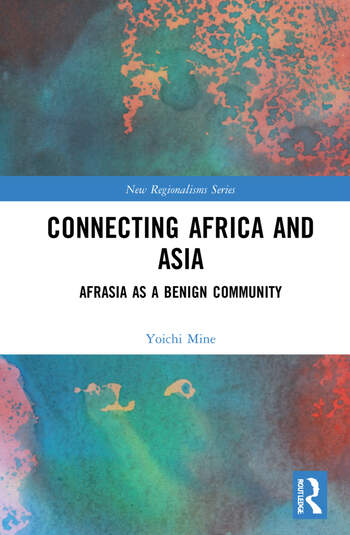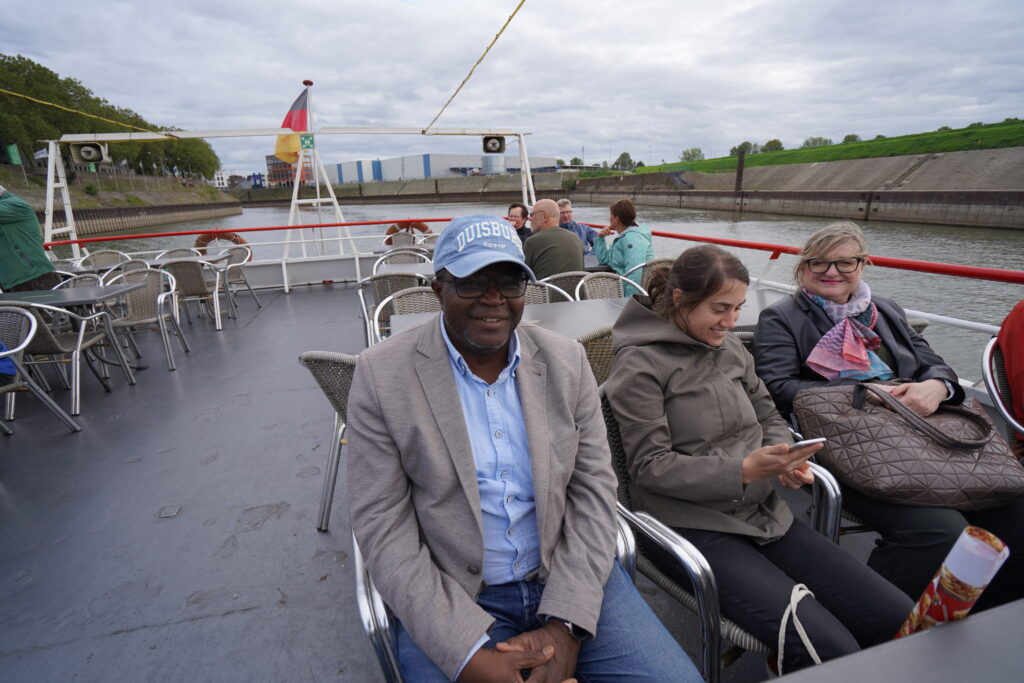As part of my visit to Berlin (this past September 2023) to do some work on the De:Link // Re:Link Project involving the Belt and Road Initiative, I had the opportunity (among many other activities such as the pleasant trip to the port of Duisburg, the largest inland port in the world) to read and discuss with some members of the project team, during the De:Link // Re:Link Silk Roads Roundtable, a new book on Africa and Asia by Professor Yoichi Mine of the University of Tokyo. In this blog post, I make some reflections on the book.

The book, Connecting Africa and Asia (Mine 2022), opens with the surprising demographic that in 2100, that is, in less than a 100 years from now, the world’s population would be about 11 billion and that as much as 80% of this population would be in Asia and Africa, divided equally between the two continents. This is an important and timely academic study in the midst of a fast changing world involving new alignments and realignments that might indeed lead to a new world order quite different from what we know now. The main theme and message of the book is that Africa and Asia would play important roles in this new, emerging global constellation. Indeed, this theme centering Africa and Asia is captured in the following statement: “I believe this kind of work that situates Africa and Asia in a long-term perspective, is urgently needed to prepare both – Asia, which is still gaining strength, and Africa, which is catching up with Asia towards the next century – for peaceful and dynamic dialogues with each other and with the rest of the world” (page 4).
The book is very well-structured, comprising three parts, each with three chapters, thus giving us nine chapters in a book of less than 200 pages. In this short book, the author is able to cover topics and regional institutions of importance to Africa and Asia, such as the Bandung Conference of 1955, Association of Southeast Asian Nations (ASEAN), African Union (AU), Brazil, Russia, India, China and South Africa (BRICS), Global South, and the Belt and Road Initiative (BRI), to name a few.
An important contribution of the author then is drawing together matters of topical importance to, not just only Africa and Asia, but to the wider world, in one volume. Of course, an inherent shortcoming associated with this kind of broad coverage in a book of this size is that there is necessarily a lack of depth on some, though not all, of the key topics straddling Africa and Asia. For instance, the massive BRI, which our De:Link // Re:Link project dwells on, and which is the topic of intense contemporaneous debate throughout Africa, Asia, and beyond, including Europe and the USA, is covered in only two pages (pages 53-54). Another strength of the book is the generous amount of illustration deployed by the author to develop his arguments. He captures the dynamics of this “macro-region called Afrasia” (page 141) with about 20 maps and some copious amounts of graphs and statistics to show what Afrasia is now and how it would be in a 100 years’ time.
A further strength of the book is that the author challenges some existing notions that are Africa-centric or Asia-centric, and invites Africans and Asians to rethink and reconceptualize notions beyond the borders of Africa and Asia. He claims: “I would like to draw certain conclusions about the rationale for advocating a broader Afrasianism rather than Asianism or Africanism” (page 6). For instance, it remains to be seen how willing pan-Africanists on the continent and in the African diaspora are to extend their strong notions of exclusive African or Black identity to embrace Yoichi Mine’s concept of Afrasianism, which I propose in this blog to be renamed as pan-Afrasianism! In a way, though the term may not have been used widely until now, the seeds of pan-Afrasianism were sowed in Bandung in 1955. Pan-Afrasianism may be defined as a mega-regional consciousness involving the promotion of a common Afrasian identity, the struggle to free Africa and Asia from imperialism and other kinds for oppression, and the quest for a better Afrasian future. Yoichi Mine’s book, thus, among others, draws attention to the central roles Africa and Asia are destined to play in the comity of nations and regions of the world, and challenges Africans and Asians to embrace or re-embrace a pan-Afrasian consciousness.
It remains to be seen how other parts of the world react to, or fit in with, this mega-region called Afrasia. How would the western world, involving Europe and North America, react to this emerged giant comprising 80% of the world’s population? How would existing regional conceptualizations like Asia-Pacific, involving Australia and New Zealand, fit into this Afrasian consciousness? How would Russia, Brazil, and other members of BRICS+ that are not traditionally in the Afrasian space react to this proposed Afrasian realignment? And how would the United Nations ensure that this Afrasian behemoth is well-represented in the global body.
Whatever the case, for me, making the case for a pan-Afrasian consciousness is one of the most important contributions of the book, which must be on the shelves of all scholars of the humanities and social sciences, be they in Africa, Asia, or Europe and beyond!

Mine, Yoichi (2022): Connecting Africa and Asia: Afrasia as a Benign Community. Routledge: London and New York. ISBN 9781032134536
A version of this reflection has been submitted as a book review to the International Quarterly for Asian Studies. This post was edited by John Njenga Karugia.
